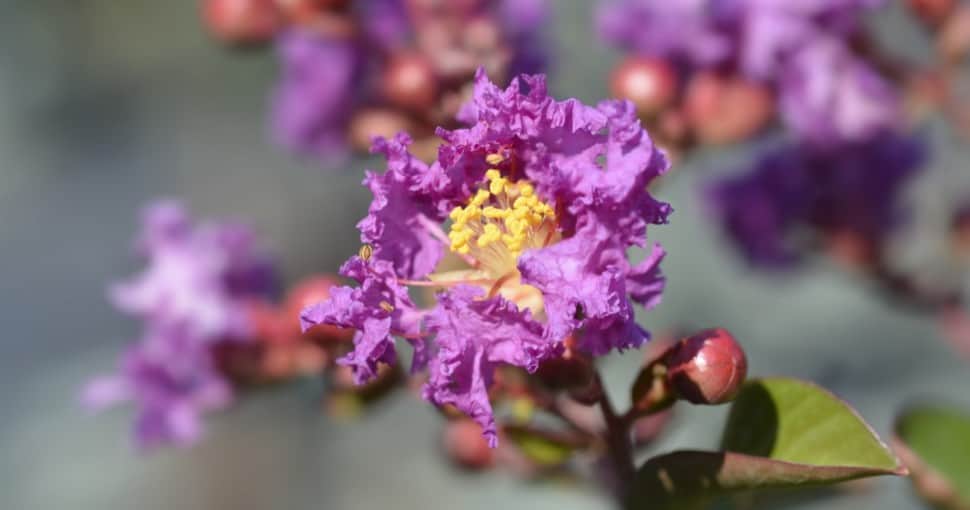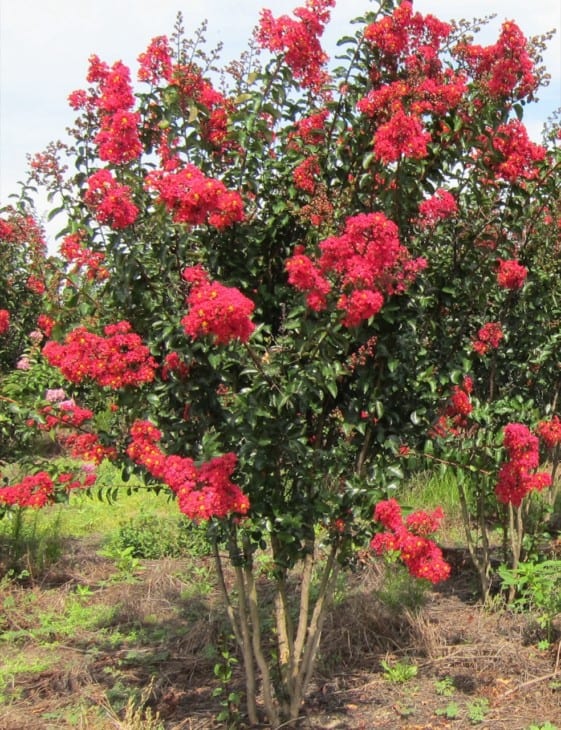From little hedges to towering trees, bright bold coloration to less-is-more elegance, crepe myrtles offer gardening gorgeousness like few other plants. Whether you’re a seasoned gardener or just looking to introduce some excitement back into your backyard, the plants listed here are exemplary specimens prime for the pruning and planting.
Contents
One of the big distinguishing features of crepe myrtles are their blooms. These are some of the showiest trees and hedges out there, though there are variants that offer a more subtle and subdued appearance. They grow in a wide range of sizes, from tiny 2 ft dwarf shrubs to towering 30 ft trees.
Even better, crepe myrtles change color with the seasons. That’s true of many plants, of course, but the color variation and sheer vividness and vivacity offered by crepe myrtles is tough to beat. Their various sizes also let them suit many roles, from star plant to supporting hedge.
These plants are intended for zones 6 to 10. They should be exposed to full sunlight for at least six hours per day. Their blooming time typically stretches from July through September, though some varieties bloom into the first frost.
If you don’t live in a climate zone suitable for any of these Crepe Myrtle varieties, take a look at some trees similar to Crepe Myrtle for a suitable alternative.
1. Arapaho Crepe Myrtle
This is a reasonably tall variety as far as crepe myrtle trees go, being able to reach a height of up to 20 ft. In terms of foliage, it boasts lovely red flowers. Unlike some other crepe myrtle trees, these flowers are a “true” red, and not merely dark pink.
In addition, this tree is more resistant to powdery mildew and other potential problems than some other crepe myrtle trees. The taller size makes it a fantastic choice for those looking for trees that fill out the background of their garden while still standing out.
This tree is a more recent entry into the world of crepe myrtle trees, having first been bred in 1989, though it was not officially entered into the pantheon until 2003. As a result, it is still relatively rare.
2. Catawba Crepe Myrtle
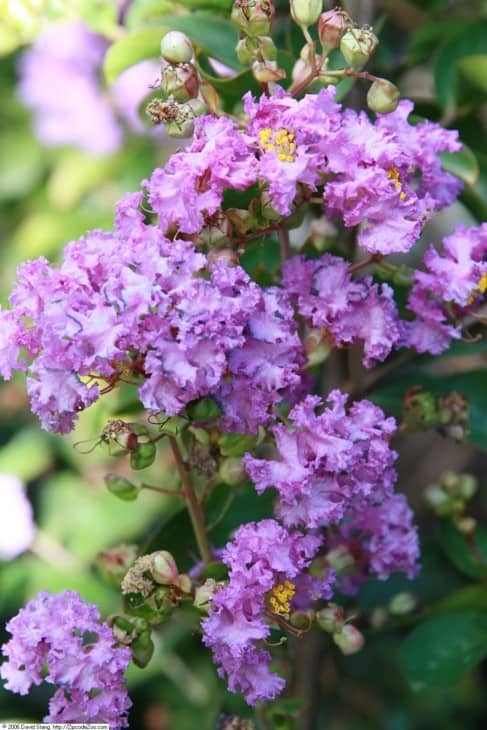
This is one of the shorter crepe myrtle trees on this list, growing to an average height of between 8 and 10 ft. These trees have been around for a while, with it first being introduced in 1967.
It might well be worth it because this crepe myrtle boasts absolutely beautiful purple flowers – and that’s just in the summer. Come autumn, they burst into immaculate orange and reddish tones. Not only are these trees resistant to powdery mildew, but their leaves also have a glossy quality.
One of the nice things about this means that you can fit it into tight spaces or those with a lower overhang and not have to worry about it being cramped. It also works as a good hedge plant.
3. Natchez Crepe Myrtle
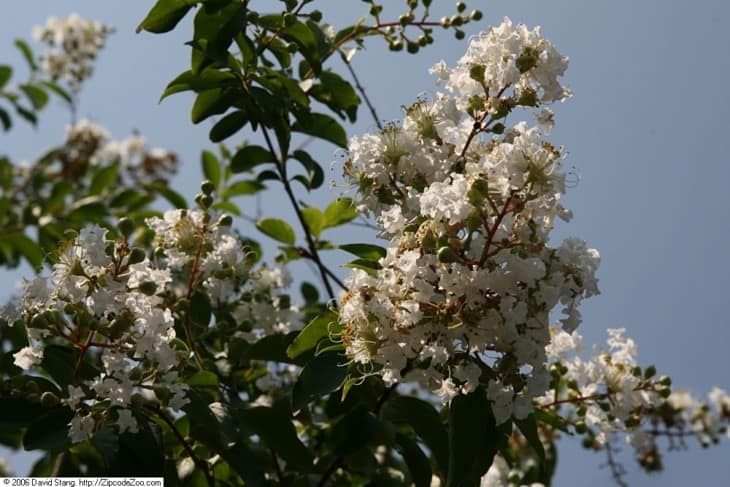
This is one of the taller options on this list, with the Natchez crepe being able to grow to an impressive 30 ft tall. It has been around for a while, having first been introduced into the world back in 1978.
It is a perfect example of simplicity serving as elegance. While it doesn’t have the same shock of bright colors you’ll find with other myrtle crepe trees, it does have elegant white flowers, which can lend an understated elegance to your yard.
Still, its leaves do turn yellow and orange (sometimes orangish-red) in the fall, while the bark turns a lovely cinnamon color. It also has good mildew resistance, which is always nice.
4. Tuscarora Crepe Myrtle
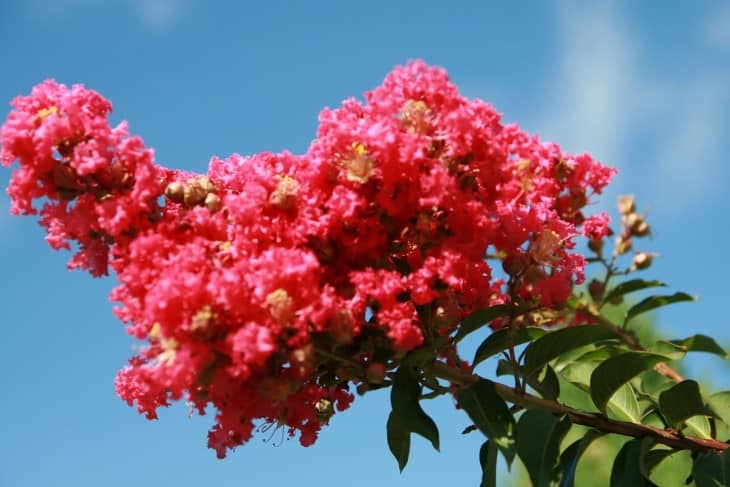
This is a relatively tallish myrtle crepe tree, able to reach 20 ft high. The base itself can sometimes bulge, creating an intriguing vase shape. It offers especially good resistance to mildew.
In terms of color, it has absolutely incredible pinkish coral blossoms. These later turn reddish in the spring, and are often accompanied by some new foliage as well. Come fall, these flowers turn lovely orange and red colors.
This myrtle crepe tree has been around for a while. It was first bred back in 1967, though it took more than a decade for it to be formally introduced in 1978.
4. Muskogee Crepe Myrtle
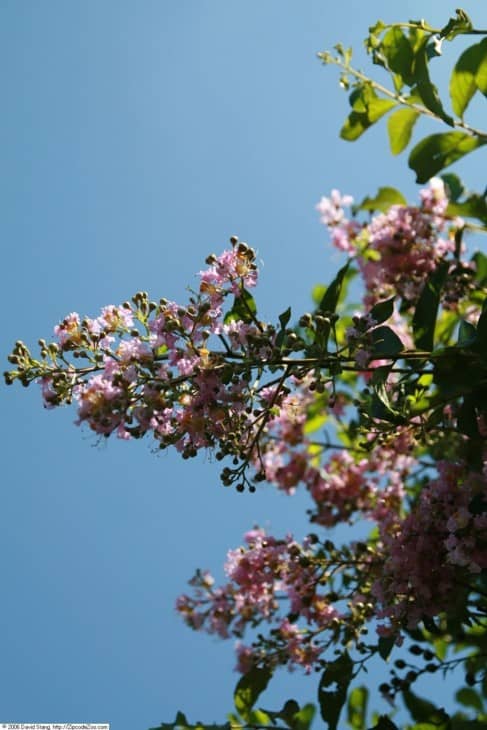
Size isn’t everything – but if it is for you, the Muskogee is certainly a crepe myrtle tree to consider. It can grow to a height of between 20 to 30 ft, and even when pruned it can resprout to a height of 6 to 10 ft by the time autumn rolls around.
This is also a crepe myrtle tree that looks absolutely stunning in the summertime with lovely lilac flowers that are second to none. In autumn, it starts to turn a nice shade of orange.
This is another crepe myrtle tree that has been around for a while, having first been introduced in 1978. It is a pretty hardy tree, as it not only boasts good mildew resistance but it can also last several seasons in prime condition.
5. Sioux Crepe Myrtle
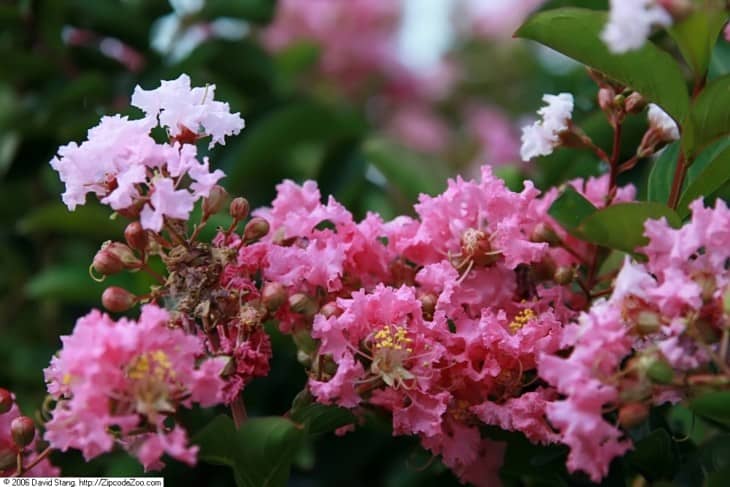
These trees grow from 15 to 20 ft on average. They have a narrower build, which means that they are a good fit for gardens with less space. If you want a tree that is tall but won’t take up too much space, this might be a good one to consider.
They feature a soft yet vivid pink, and their coloration is quite distinct. There’s a softness and delicacy to these flowers that you don’t see with many other trees, let alone myrtle crepes. In the fall that soft pink gives way to rich red and purple while the bark turns greyish-brown.
The Sioux has won its fair share of acclaim since its introduction, winning the Florida Plant of the Year award in 1998.
6. Tonto Crepe Myrtle
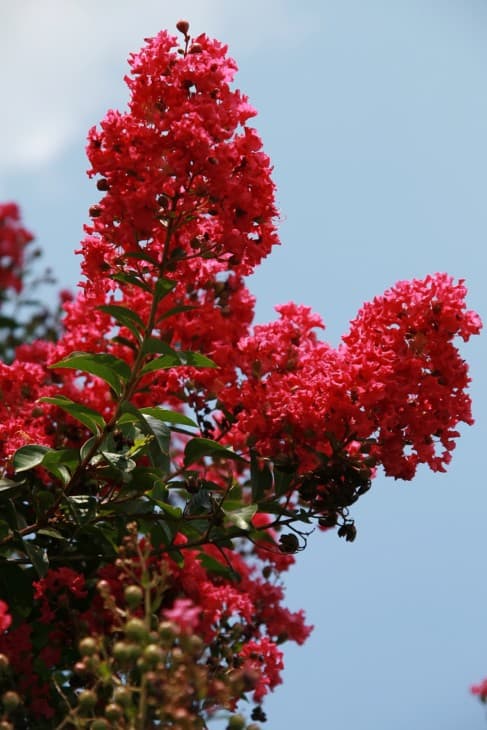
This is another crepe tree which is on the recent side, having first been introduced in 1995. Once planted, you should only have to water it occasionally, though in hotter conditions it’ll be thirstier and require more attention, though it’s still pretty drought-resistant.
This semi-dwarf crepe myrtle is definitely on the smaller side, growing from between 4 to 10 ft. It features striking fuchsia coloration, which really helps it stand out from other variants. In the fall, the flowers turn a lovely maroon color with the bark developing a creamy complexion.
Due to its short stature, these plants work well as hedges and accent pieces in the garden. They’re also nice and hardy, being reasonably resistant to disease.
7. Dynamite Crepe Myrtle
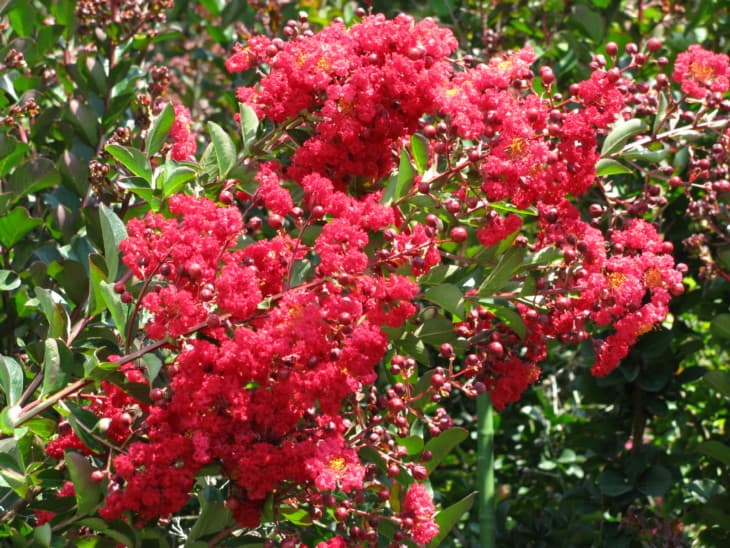
These are crepe myrtles that do best with lots of sunlight – in fact, they can start to fade when exposed to too much overcast weather for too long. On the flip side, keeping these crepe myrtles in good condition is well worth it – the cherry-crimson coloration is second to none.
As such, this is a great plant to put at the center of your garden. This is the kind of plant you make into a main attraction, though at around 6 ft tall, it’s on the smaller side. You may want to pair it with a complementarily-colored taller tree.
This tree is quite hardy as well, being able to withstand temperatures of up to minus 50 degrees Fahrenheit. From spring to summer, it offers an explosion of color, and can even retain its brilliance well into winter given the right conditions.

